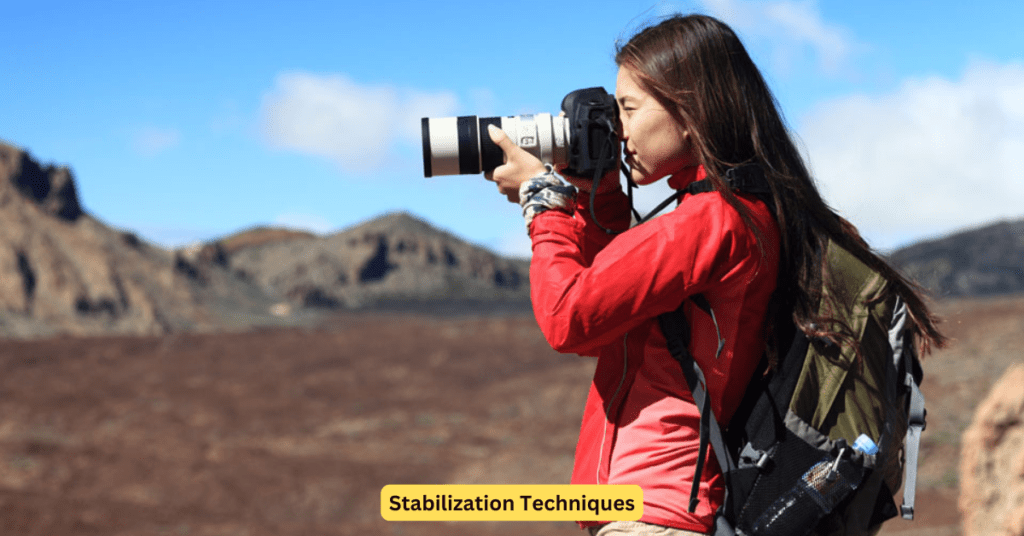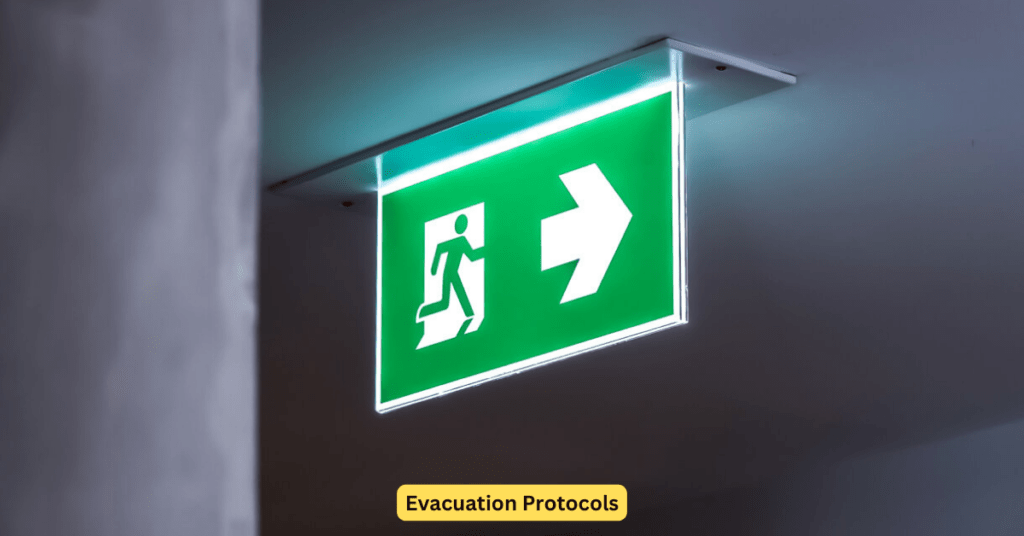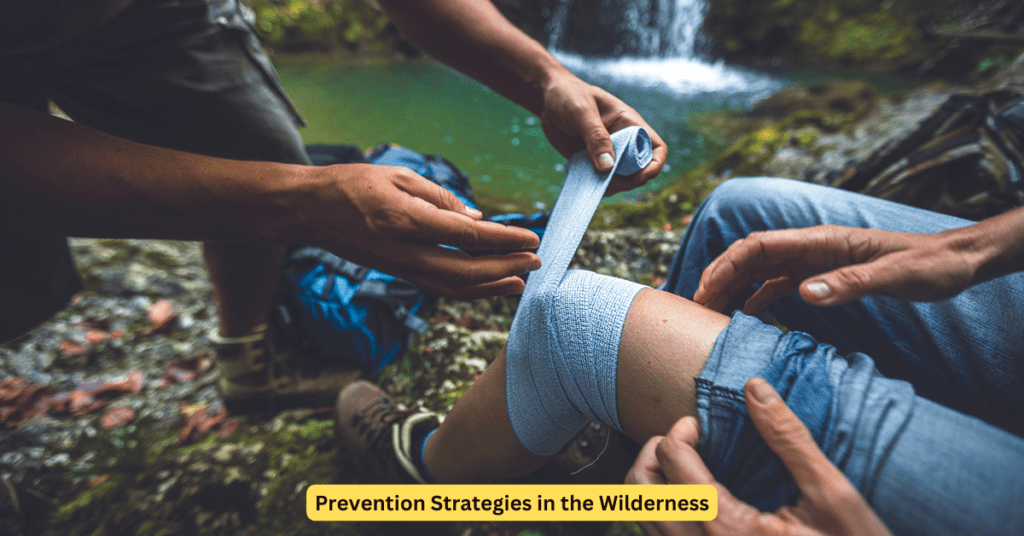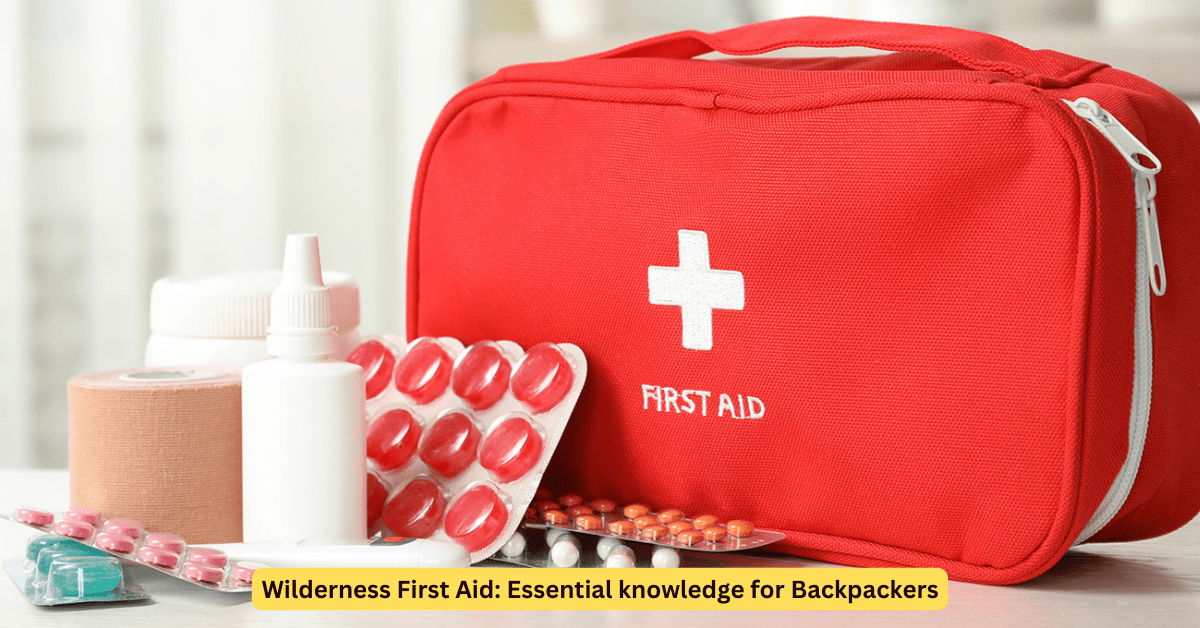When venturing into the wilderness, whether it’s for a day hike or an extended backpacking trip, being prepared for emergencies is crucial. In remote environments, professional medical assistance may be hours or even days away, making it essential for outdoor enthusiasts to equip themselves with wilderness first aid knowledge. This comprehensive guide aims to provide backpackers with the essential skills, techniques, and protocols necessary to manage injuries and medical emergencies in the wilderness effectively.
Understanding Wilderness First Aid
Wilderness first aid differs significantly from standard first aid practiced in urban settings. While urban first aid often relies on the availability of professional medical services and well-equipped facilities, wilderness first aid emphasizes improvisation, resourcefulness, and adaptability in austere environments. In the wilderness, responders must contend with limited resources, harsh terrain, and adverse weather conditions, necessitating a different approach to medical care.
Why Wilderness First Aid Matters
The wilderness presents a myriad of risks and hazards, ranging from minor injuries like cuts and bruises to more severe conditions such as fractures, sprains, or even encounters with wildlife. Without the proper knowledge and skills to manage these situations, even minor incidents can escalate into life-threatening emergencies. Wilderness first aid not only focuses on treating injuries but also on preventing them through awareness of environmental risks, practicing proper hygiene, and making informed decisions while exploring remote areas.
Key Principles of Wilderness First Aid
Before diving into specific techniques and procedures, it’s essential to understand the fundamental principles that guide wilderness first aid:
- Assessment: Rapidly and accurately assess the situation, including the patient’s condition, the environment, and available resources. Prioritize treatment based on the severity of injuries and the potential for worsening conditions.
- Stabilization: Stabilize life-threatening conditions first to prevent further injury or deterioration. This may involve controlling bleeding, immobilizing fractures, or managing airway obstructions.
Stabilization Techniques

Controlling Bleeding
In the wilderness, controlling bleeding promptly is crucial to prevent life-threatening blood loss. Here are some techniques for managing bleeding in remote environments:
- Direct Pressure: Apply direct pressure to the wound using a clean cloth or bandage to control bleeding.
- Elevation: Elevate the injured limb above the level of the heart to reduce blood flow to the wound.
- Pressure Points: Apply pressure to specific pressure points to slow or stop bleeding in extremities.
- Tourniquet: As a last resort for severe bleeding, apply a tourniquet proximal to the injury site, but only if direct pressure and other methods fail.
Immobilizing Fractures
In the wilderness, immobilizing fractures helps prevent further injury and reduces pain. Follow these steps to immobilize a suspected fracture:
- Assess for Deformity: Look for signs of deformity, swelling, or abnormal movement around the injury site.
- Stabilize the Limb: Use improvised splints, such as sticks, trekking poles, or rolled-up clothing, to immobilize the injured limb.
- Secure the Splint: Secure the splint in place using bandages or cloth strips, ensuring that it’s snug but not too tight to restrict circulation.
- Reassess and Monitor: Reassess the injured limb regularly for changes in color, sensation, or temperature, and monitor the patient for signs of shock.
By mastering these stabilization techniques, wilderness responders can effectively manage traumatic injuries and stabilize patients until further medical assistance is available.
Treatment Procedures

Assessment and Prioritization
In wilderness first aid, quick and accurate assessment of patients is critical for prioritizing treatment and optimizing outcomes. Here’s a systematic approach to assessment in remote environments:
- Scene Safety: Ensure the safety of yourself, bystanders, and the patient before initiating assessment procedures.
- Primary Survey: Conduct a rapid primary survey to identify life-threatening conditions, such as airway obstructions, breathing difficulties, or severe bleeding.
- Secondary Survey: Perform a detailed secondary survey to assess for additional injuries or medical conditions that may require treatment.
Basic Wound Care
In the wilderness, proper wound care can prevent infection and facilitate healing. Follow these steps for basic wound care in remote settings:
- Clean the Wound: Rinse the wound with clean water or saline solution to remove debris and bacteria.
- Apply Antiseptic: Apply an antiseptic solution, such as iodine or chlorhexidine, to disinfect the wound and reduce the risk of infection.
- Dress the Wound: Cover the wound with a sterile dressing or bandage to protect it from contamination and promote healing.
Managing Environmental Emergencies
Environmental emergencies, such as heatstroke, hypothermia, or dehydration, can pose significant risks to outdoor enthusiasts. Here’s how to recognize and manage common environmental emergencies in the wilderness:
- Heatstroke: Move the patient to a cool, shaded area and initiate rapid cooling measures, such as removing excess clothing, applying cold packs to the groin and armpits, and providing fluids to rehydrate.
- Hypothermia: Gradually warm the patient using dry clothing, blankets, and body heat, and provide warm fluids to rehydrate.
- Dehydration: Encourage the patient to drink fluids regularly, preferably water or electrolyte solutions, to rehydrate and prevent further dehydration.
By mastering these treatment procedures, wilderness responders can effectively manage a wide range of medical emergencies and improve patient outcomes in remote environments.
Evacuation Protocols

Determining the Need for Evacuation
In wilderness first aid, determining the need for evacuation is based on several factors, including the severity of the patient’s condition, the availability of medical resources, and the accessibility of evacuation routes. Consider the following guidelines when assessing the need for evacuation:
- Life-Threatening Conditions: Evacuate patients with life-threatening conditions, such as severe trauma, cardiac arrest, or respiratory distress, as soon as possible.
- Prolonged Care Requirements: If the patient requires prolonged medical care or specialized treatment not available in the wilderness, consider evacuation to a medical facility.
- Environmental Hazards: Evacuate patients from hazardous environments, such as extreme weather conditions, unstable terrain, or areas prone to natural disasters.
Executing a Safe Evacuation Plan
Once the decision to evacuate has been made, it’s essential to execute a safe evacuation plan to ensure the well-being of the patient and responders. Follow these steps to plan and execute a safe evacuation in remote environments:
- Assess Evacuation Routes: Identify and assess potential evacuation routes, considering factors such as terrain difficulty, distance, and accessibility.
- Coordinate with Emergency Services: Contact local emergency services or search and rescue organizations to coordinate evacuation efforts and provide essential information about the patient’s condition and location.
- Utilize Available Resources: Make use of available transportation methods, such as hiking out, using a litter or improvised stretcher, or calling for aerial evacuation if necessary.
- Monitor Patient: Continuously monitor the patient’s condition during evacuation, providing necessary medical interventions and reassurance as needed.
Prevention Strategies in the Wilderness

Prevention is a cornerstone of wilderness first aid. By proactively addressing potential risks and hazards, backpackers can significantly reduce the likelihood of accidents and medical emergencies during their outdoor adventures. In this section, we’ll explore various prevention strategies that are essential for ensuring safety in the wilderness.
Gear Selection and Preparation
Choosing the right gear and equipment is crucial for staying safe and comfortable in the wilderness. Here are some tips for selecting and preparing your gear:
- Appropriate Clothing: Dress in layers to regulate body temperature and protect against the elements. Choose moisture-wicking fabrics that dry quickly and avoid cotton, which retains moisture and can lead to hypothermia.
- Footwear: Wear sturdy, supportive footwear that provides good traction and ankle support. Break in new boots before embarking on a long hike to prevent blisters and discomfort.
- Navigation Tools: Carry a map and compass (and know how to use them) or a GPS device to avoid getting lost. Familiarize yourself with the area’s terrain and landmarks before setting out.
- Emergency Shelter: Pack a lightweight, waterproof shelter such as a tent or emergency bivvy in case you need to spend an unexpected night outdoors.
Hydration and Nutrition
Staying hydrated and well-nourished is essential for maintaining energy levels and preventing heat-related illnesses and fatigue. Follow these guidelines for hydration and nutrition in the wilderness:
- Water: Drink plenty of water throughout the day, even if you don’t feel thirsty. Carry an adequate supply of water or purification methods to ensure access to safe drinking water.
- Electrolytes: Replace electrolytes lost through sweating by consuming electrolyte-rich foods and drinks, such as sports drinks or electrolyte tablets.
- Nutritious Snacks: Pack lightweight, high-energy snacks like nuts, dried fruit, and energy bars to fuel your adventures.
- Meal Planning: Plan balanced meals that provide a mix of carbohydrates, protein, and fats to sustain energy levels during long hikes or strenuous activities.
Wildlife Safety
Encounters with wildlife are part of the wilderness experience, but it’s essential to respect wildlife and minimize the risk of conflicts. Follow these guidelines for wildlife safety:
- Awareness: Be aware of your surroundings and watch for signs of wildlife activity, such as tracks, scat, or rustling bushes.
- Distance: Keep a safe distance from wildlife and avoid approaching or feeding animals. Use binoculars or a zoom lens to observe wildlife from a distance.
- Food Storage: Store food and scented items securely in bear-proof containers or bear bags to prevent attracting wildlife to your campsite.
- Bear Safety: Learn how to respond to bear encounters, including techniques for bear avoidance, proper food storage, and what to do in the event of an encounter.
Environmental Awareness
Understanding the natural environment and its potential hazards is essential for staying safe in the wilderness. Here are some environmental awareness tips:
- Weather Forecast: Check the weather forecast before heading out and be prepared for changing conditions. Dress accordingly and seek shelter during severe weather.
- Terrain Evaluation: Assess terrain conditions and plan your route accordingly. Be cautious of steep or unstable terrain, river crossings, and avalanche-prone areas.
- Leave No Trace: Practice Leave No Trace principles to minimize your impact on the environment and preserve wilderness areas for future generations.
- Emergency Communication: Carry a reliable means of communication, such as a satellite phone or personal locator beacon, in case of emergencies.
Conclusion & Recap
In this comprehensive guide to wilderness first aid for backpackers, we’ve covered essential knowledge and skills necessary for staying safe and prepared in the wilderness. Let’s recap some of the key points discussed in each section:
Conclusion
- Wilderness first aid is a critical skill set for backpackers and outdoor enthusiasts, enabling them to respond effectively to emergencies in remote environments.
- By adhering to the principles of assessment, stabilization, treatment, evacuation, and prevention, backpackers can enhance their safety and well-being during outdoor adventures.
- Continued education, practice, and preparedness are essential for maintaining proficiency in wilderness first aid and ensuring a safe and enjoyable outdoor experience for all.
In conclusion, by equipping yourself with wilderness first aid knowledge and skills, you not only enhance your ability to respond to emergencies but also contribute to a culture of safety and preparedness in the outdoor community. Remember to stay informed, stay prepared, and most importantly, stay safe on your wilderness adventures.
Frequently Asked Questions (FAQs)
What is wilderness first aid?
Wilderness first aid is the practice of providing medical care in remote or austere environments where professional medical help may be hours or even days away. It involves assessing, stabilizing, and treating injuries and illnesses encountered in the wilderness using limited resources and improvisation techniques.
Why is wilderness first aid important for backpackers?
Wilderness first aid is crucial for backpackers because it equips them with the knowledge and skills needed to handle medical emergencies in remote environments where access to professional medical assistance is limited. Being prepared can mean the difference between life and death in the wilderness.
What are the key principles of wilderness first aid?
The key principles of wilderness first aid include rapid assessment, prioritization of treatment, stabilization of life-threatening conditions, appropriate treatment based on available resources, safe evacuation if necessary, and proactive prevention strategies to minimize risks and hazards.
What should be included in a wilderness first aid kit?
A wilderness first aid kit should contain essential supplies for treating injuries and illnesses encountered in the wilderness, such as bandages, adhesive tape, antiseptic wipes, pain relievers, splints, a CPR mask, and emergency blankets. It should also include personal medications and any specific items tailored to the individual’s medical needs.
How can I prevent injuries and illnesses in the wilderness?
Preventing injuries and illnesses in the wilderness involves proper preparation, including selecting and preparing gear, staying hydrated and nourished, practicing wildlife safety, maintaining environmental awareness, and adhering to safety guidelines and Leave No Trace principles.
What should I do if someone is injured or ill in the wilderness?
If someone is injured or ill in the wilderness, assess the situation and prioritize treatment based on the severity of the condition. Stabilize life-threatening conditions first, administer appropriate first aid treatments, and determine the need for evacuation if necessary. Stay calm, reassure the patient, and provide comfort and support while waiting for help to arrive.
How can I learn wilderness first aid skills?
Wilderness first aid courses and workshops are offered by various organizations and outdoor education providers. These courses typically cover essential wilderness first aid techniques, protocols, and hands-on practice scenarios to prepare participants for emergencies in remote environments.
What should I do in case of a snake bite or insect sting in the wilderness?
If bitten by a snake or stung by an insect in the wilderness, remain calm and try to identify the type of snake or insect if possible. Clean the wound with soap and water, immobilize the affected limb, and seek medical help as soon as possible. Avoid applying ice or tourniquets, and do not attempt to capture or kill the snake or insect for identification.
How do I recognize and manage heat-related illnesses in the wilderness?
Heat-related illnesses such as heat exhaustion and heatstroke can be serious and potentially life-threatening. Recognize the symptoms, including dizziness, nausea, rapid heartbeat, and confusion, and take immediate action to cool the person down by moving them to a shaded area, loosening clothing, and applying cool water or ice packs.
What should I do if I encounter a bear or other wildlife in the wilderness?
If you encounter a bear or other wildlife in the wilderness, remain calm and avoid startling or provoking the animal. Back away slowly while facing the animal and make noise to alert it to your presence. Do not run or turn your back on the animal, and if necessary, use bear spray or other deterrents to deter an aggressive bear.

